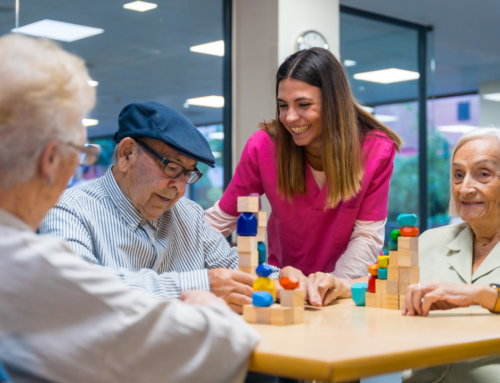Share This Story!
Improving Seniors’ Nutritional Intake
People are often surprised to learn that many elderly suffer from senior malnutrition. The situation isn’t always a case of not eating enough food in general, but rather not eating enough nutritious food to fuel the body properly for better performance and health. When seniors eat a balanced diet that includes plenty of fruits and vegetables, better outcomes are seen. These might include an increase in bone or muscle strength, which reduces the risk of falling. Consider the 5 following tips to avoid senior malnutrition.
1. Embrace meal plans and meal prep
For most people, thinking about what to make from one meal to the next can be time-consuming. But for seniors, failing to make time to plan a healthy diet for the day or week can lead to eating junk foods with empty calories. Likewise, creating a meal plan can keep the menu fresh and reduce dietary boredom. Take the time to create a daily or weekly meal plan. Caretakers, relatives, or friends of older adults can help by making a shopping list or offering to go shopping together.
2. Stock up on healthy snacks
Junk food is often the go-to choice for a quick snack between meals. Junk food is tasty, but usually lacks essential nutrients that the body needs. Instead, keep healthy alternatives on hand like fruits and vegetables. To make the transition to healthy bites easier, opt for pre-chopped vegetable or fruit platters, or more flavorful fruits and vegetables like carrots, tomatoes, and bananas.
3. Chip in on grocery shopping
This tip is primarily aimed at caregivers or relatives and friends of seniors. Often as people age, income levels can drop significantly, especially if a senior is living on a fixed income. Healthier foods can be more expensive than prepackaged options, which is why many seniors opt for cheaper, less healthy foods. Wherever possible, if caregivers, relatives, or friends suspect a loved one may be suffering from senior malnutrition due to income limitations, chip in and stock a senior’s fridge with fruits and vegetables. Keep in mind that frozen, fresh, or canned versions are all great options.
4. Keep mealtime social
Especially for seniors that live alone, mealtime can feel depressing without people to share a meal. But evidence also suggests that eating in more social settings has the potential to improve dietary choices. Encourage seniors to make dinner dates with friends or relatives, and ensure that shared meals are a regular event.
5. Don’t skimp on flavor
Just like when parents try to encourage children to eat more vegetables, a little bit of flavor can go a long way. Items like Brussel sprouts or broccoli can shift from discards to fan favorites. Look for low sodium or heart-healthy seasonings or new recipes that can bring a bit of zing to vegetables so that seniors look forward to cleaning the plate.
Preventing malnutrition
Malnutrition is a serious issue across all age groups. But the condition can have dangerous health repercussions for seniors that fail to eat enough nutritious foods. Caretakers or loved ones of seniors should view malnutrition as a problem that will require a group effort to overcome. When seniors do eat a nutritious diet, the result is better long-term health.





